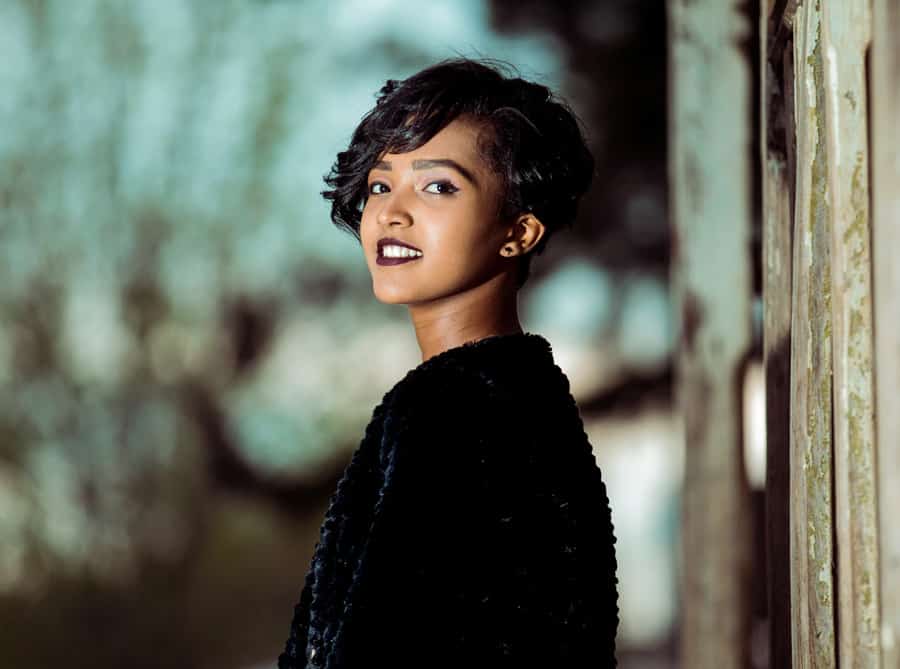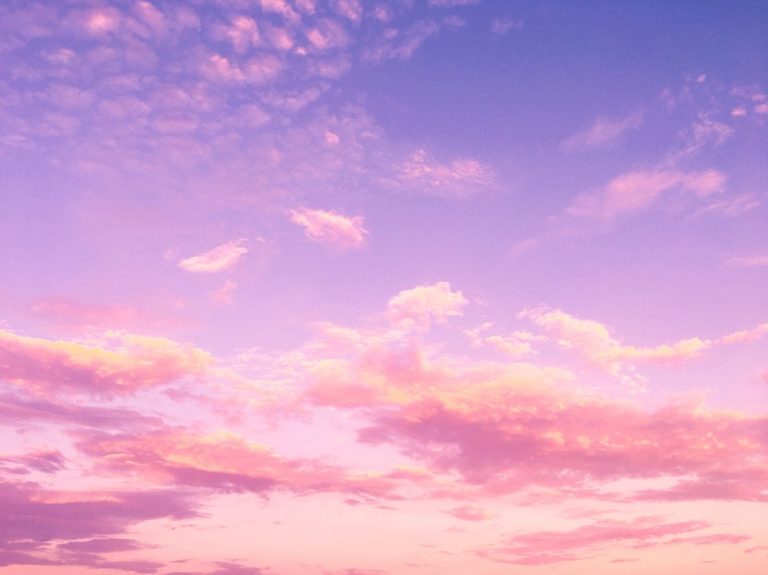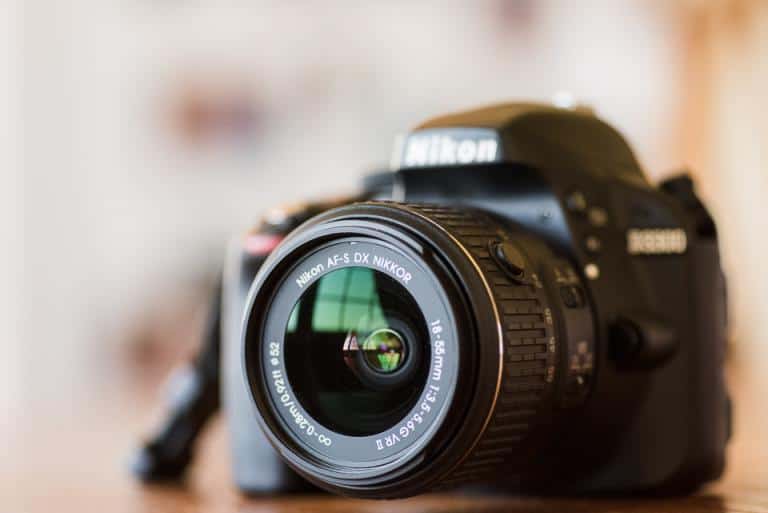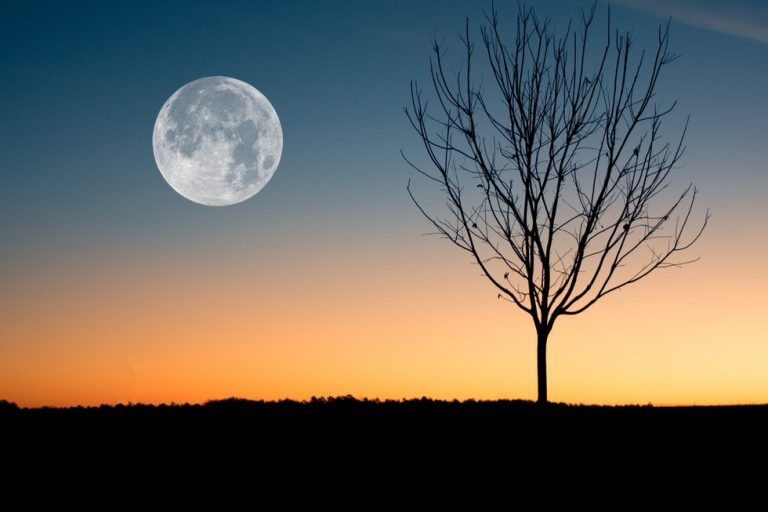A good portrait should capture your subject in a unique manner and convey emotions. Focusing on your subject, their outfit, and pose is a natural way of approaching portrait photography, but you shouldn’t neglect the background choice.
The background you select can set the tone and mood of the shot. Here are a few tips and recommendations for choosing the best background for shooting a portrait.
What Are Common Backgrounds for Portrait Photography?
If you select a few photographers who specialize in portraits and browse through their portfolios, you will find a lot of photos that use monochrome portrait backgrounds. A lot of photographers work with neutral tones since they’re versatile and make the subject the central point of focus.
How to Achieve a Blurred Background
Adjusting your focal length and aperture value can help you achieve a blurred effect for your background. The Bokeh effect creates an aesthetic result that is in high demand.
This shot by RondelMelling shows how you can use a blurred effect to make your subject stand out (Pixabay License).
Look for the Light
Using out of focus light creates a soft and aesthetic effect for your portraits. It’s a fantastic idea for Christmas-themed family portraits! If you have access to small light sources, use them to create well-defined circles in your background.
Pay Attention to Colors
The advantage of working with a blurred background is that observers will focus on the subject regardless of how colorful the background is.
Finding Detailed Backgrounds
Adding details to your background can result in an interesting composition. You can convey an emotion or message with your background. If you opt for a detailed background, use it to create a unique setting for your portrait. If you have access to furniture, use it to frame your subject in a domestic scene.
Backgrounds with Texture
The texture of your background can create a vintage or abstract effect for your images. Opt for neutral tones or muted colors, or choose a dark background for a more original effect.
Studio Backdrops
You can find a photography background with prints that represent landscapes and other settings. These backgrounds make a perfect addition to any portrait studio!
White Seamless Background
Shooting with a white seamless background for photography is a classic choice. You will get better results if you illuminate the white background with a dedicated source of light and place your subject further away from the background.
Portrait Black Background
Dark portrait backgrounds will make your subject stand out and look amazing when paired with colorful outfits. The result will have a unique aesthetic, and you will find that dark backgrounds are very versatile.
This portrait by pixel2013 shows how you can use a black background to create a moody effect (Pixabay License).
Solid Color Background
You can use a background for a portrait with a solid color to infuse energy and personality into your image. The best one depends on the mood you want to create and on your subject’s skin tone. Options to explore include red, purple, yellow, and green.
What Is the Best Background for Headshots?
It’s best to use a white or cream background for a professional headshot. You can add more personality to the image by opting for a textured background, but stay away from bright colors.
Which Color Backdrop Is the Best for Portrait?
Light and neutral colors are popular options. If you want to capture an image where your subject really stands out, think about using a black or brown background instead.
Types of Backgrounds for Portraits
There are other considerations besides background color. Here are the different types of backgrounds you can use for portraits.
1. A Simple Indoor/Outdoor Location
Prints that represent a specific indoor or outdoor location are a fun option for themed photoshoots. These prints can add variety to family or senior photo-shoots if you have access to a studio.
2. Try Muslin
We like muslin backgrounds because they create a soft and textured effect. The natural draping of the fabric will look very artistic.
3. Wrinkle-Free Vinyl
Vinyl is ideal for capturing portraits with a crisp and colorful background. Vinyl is a durable material, and it can keep wrinkles out of a vinyl backdrop.
4. Colorful Seamless Paper
Seamless paper is a popular choice because it’s affordable and available in a wide range of colors. Seamless paper is easy to work with since it’s not a reflective material.
5. Portable Backdrops
Portable backgrounds are typically smaller. If you like to shoot with natural light or travel to client’s houses, these are a must-have.
6. The Perks of Canvas
Painted or printed canvas is an affordable and versatile option. You can find a wide range of colors and scenes.
7. Try Floor Drops
The advantage of working with a floor drop is that you have more freedom for posing your subject. If you have access to a floor drop, use it to create a seamless transition between the wall and floors and have your subject stand further away from the background.
8. Other Creative Backgrounds
There are plenty of everyday items you can use as creative background options:
- Cotton bed sheets
- Blankets with interesting motifs
- Colorful curtains
- A simple white wall
- Tapestries
This portrait by Free-Photos illustrates how you can use an everyday object like window blinds in a creative manner (Pixabay License).
About Colors
It’s important to consider the type of background you want to use in relation to the colors of the background. The material of your background will influence how dark the colors look in the final shot.
Think about whether the material is matte or reflective and how crisp and vivid colors look. Take a few backdrop photos to test different settings before shooting your subject.
Photo Backdrop Ideas for Indoor Photography That You Can Find at Home
DIY photo backdrops are an inexpensive way of getting started with portrait photography.
1. Try Using Bed Sheets
We like the idea of using bed sheets because you can create an aesthetic draped effect, and it’s really simple to find white, cream, and pastel colors.
2. Have Any Lace Curtains?
A lace curtain is a gorgeous option that will add intricate details to your photo and create a vintage feel.
3. Find Something with Sequins
You can use sequins to decorate a blank wall or another white surface.
4. Try Using Bed Sheets
We like the idea of using bed sheets because you can create an aesthetic draped effect, and it’s really simple to find white, cream, and pastel colors.
5. Use Colored Paper
You can purchase rolls of colored paper to create a seamless backdrop, make a cardboard sign, or print landscapes on a large piece of paper. We recommend the paper for novice photographers because this material won’t create any reflections.
Backdrop Ideas for Outdoor Photography
You can create some beautiful portraits by staging a natural background if you don’t have access to a studio.
Portrait Backgrounds in Nature
You can create a natural effect by using potted plants and flowers to your background. You can also get creative with props like patio furniture, build a DIY fence, stage next to a road sign, or take some fun photos with a homemade lemonade stand in the background.
Tips for Studio Photography Backgrounds
These tips will help you integrate backgrounds into your images and use them to get the best results possible. DIY projects allow you to experiment with different ideas on a budget. You can repurpose household items and or use arts and crafts supplies.
Professional Backdrops
If you offer professional packages, we recommend investing in a collection of professional backdrops with neutral colors.
Your Background is Important
Choosing a background is an important part of planning a shot. Viewers will focus on the subject when they look at your images, but the background can influence how the image makes them feel.
What Mood Are You Trying to Achieve?
The texture of your background can convey an artistic or mysterious mood in your portraits. A blue background will evoke confidence and wisdom. A red background will remind viewers of love and passion.
What’s Your Budget?
DIY options are more affordable, but you should think about investing in quality neutral backdrops you can use as a part of a package that you offer if you have access to more funds.
Tips for Choosing Portrait Backgrounds
Choose a background that matches the personality of your model and the mood and tone you want to convey. Think about how the light will fall on the background, and adjust your camera settings.
What Are You Photographing? A Product or a Client?
If you’re capturing a portrait, think about how the background will reflect the personality of your model. A colorful background can express that your subject has a fun and artistic personality.
Product photography is a little different. It’s best to choose white or neutral backgrounds that help draw attention to the features of the product.
How Much Weight Can You Carry and How Much Room Do You Have?
It’s best to opt for a lightweight set that is simple to transport and install. We recommend foldable or collapsible options and materials that don’t wrinkle easily.
Trust Post-Processing
If you have access to quality editing software, you can use filters or adjust light and saturation to fix minor issues with your background.
Create a Mood Board for Inspiration
We like the idea of creating inspiration boards with photos that you like. Save images with interesting backgrounds. Email them to your own address so you can start building a collection of images. Check your email address when you need inspiration!
Conclusion
Background choice is a very important element of planning a portrait because your backdrop will shape how viewers look at your image.
We hope you follow our tips to search for backdrops that match the style and emotion you want to convey, don’t hesitate to experiment with bright colors or DIY options and make sure the one you choose is consistent with the object or model you are capturing.







